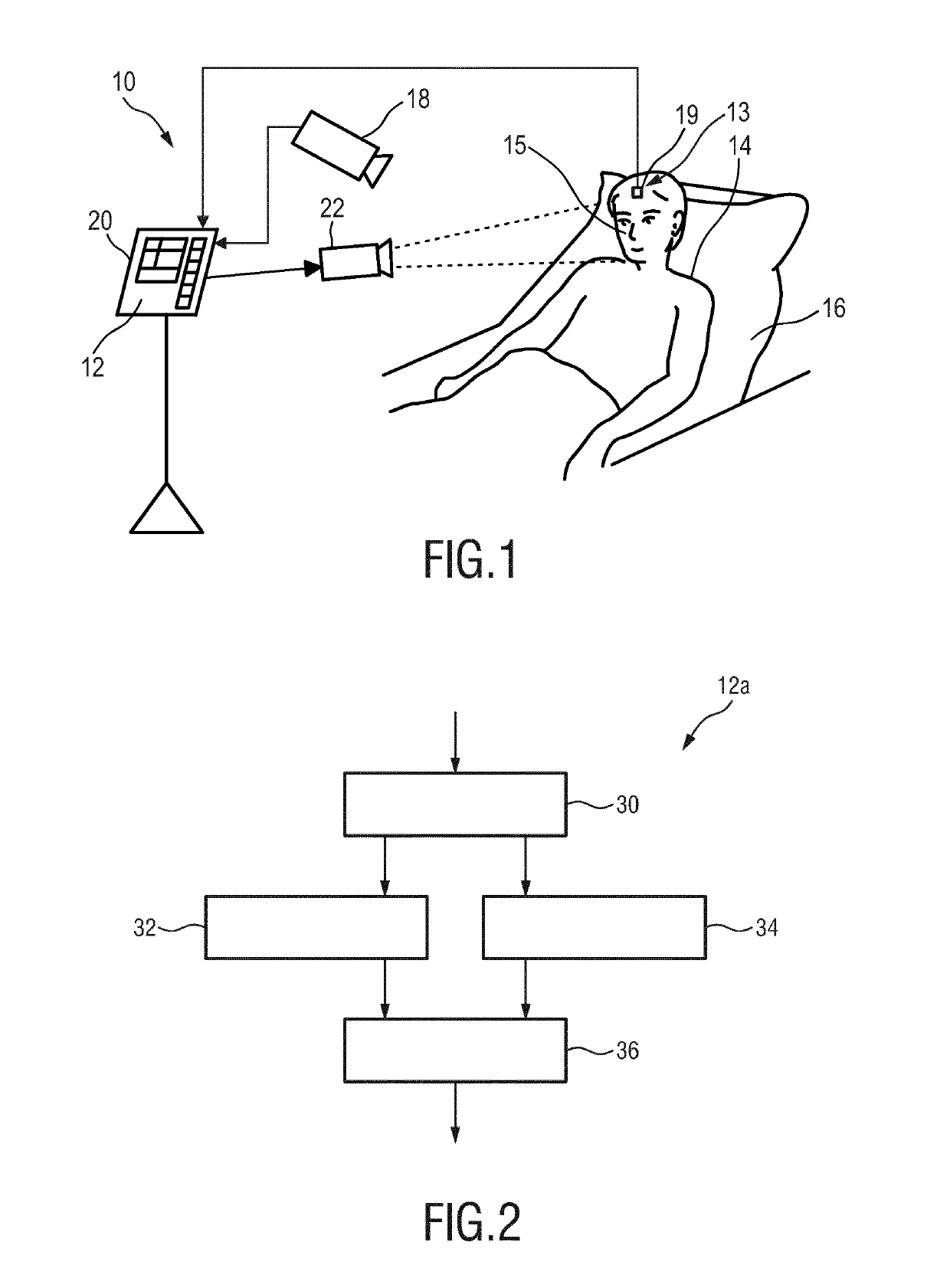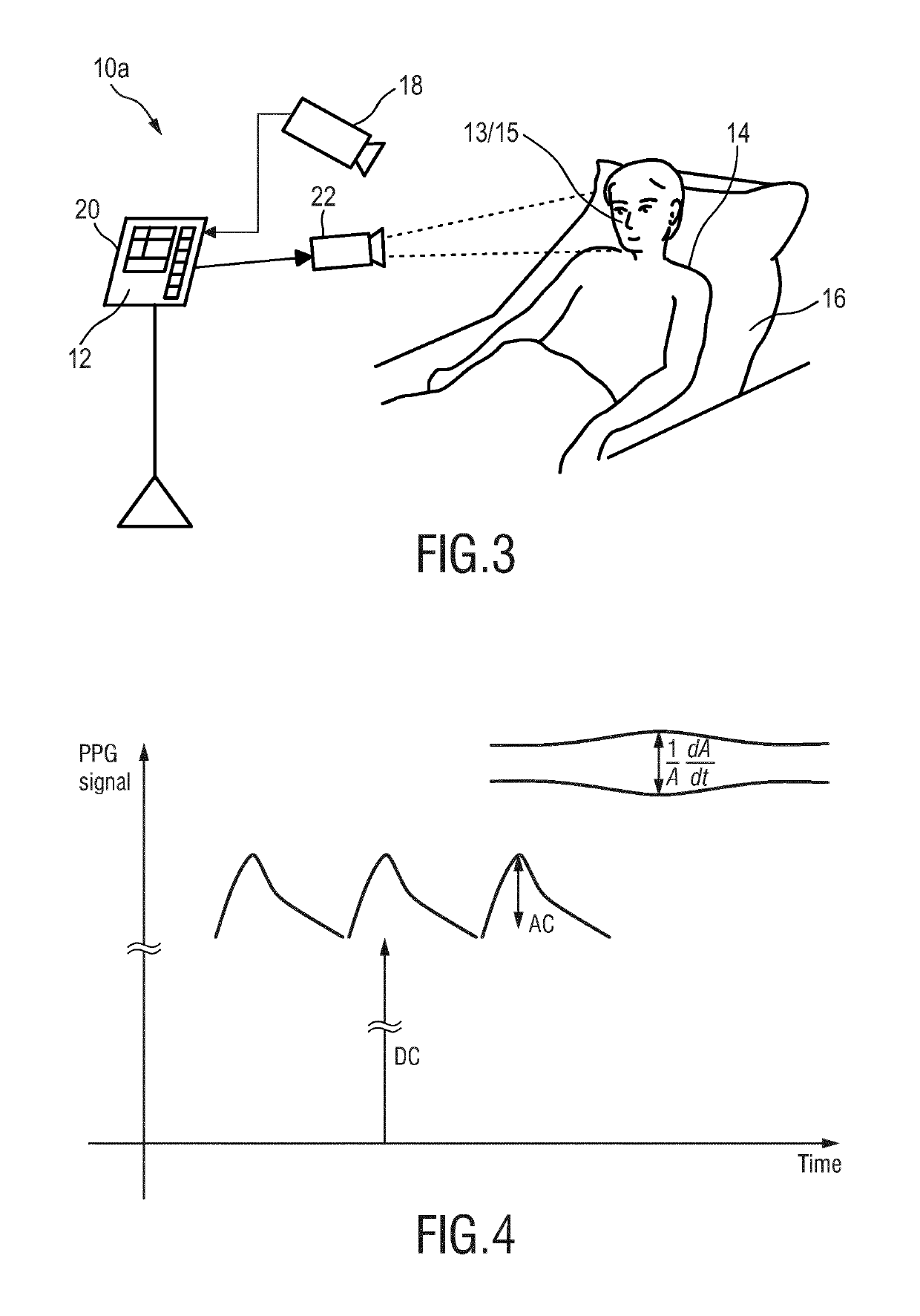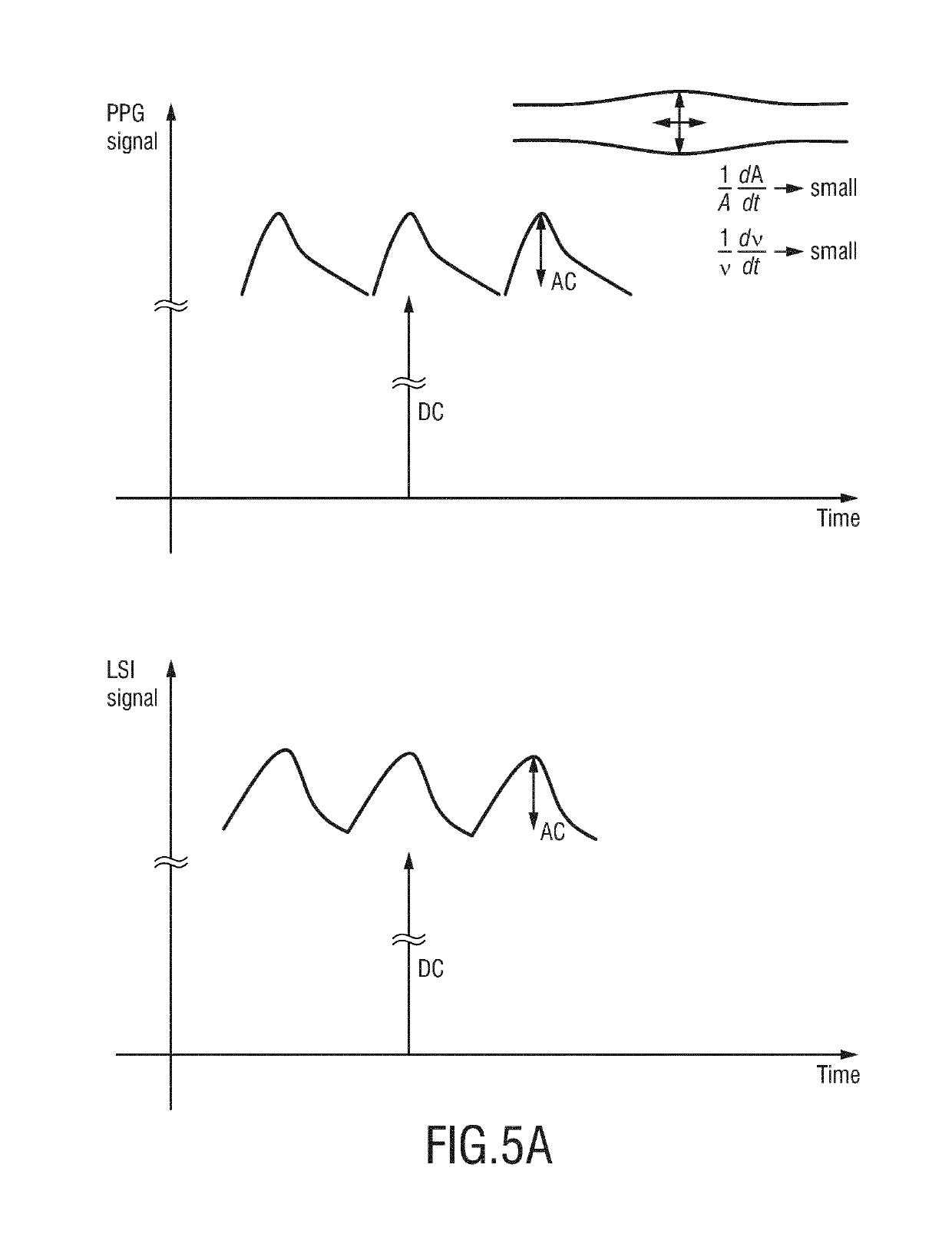Device, system and method for monitoring of peripheral arterial perfusion of a subject
a processing device and peripheral arterial technology, applied in the field of peripheral arterial perfusion monitoring of subjects, can solve the problems of weak ppg signal and the inability to distinguish between low pulsatility and low pulsatility of ppg monitoring for peripheral perfusion, and achieve low pulsatility, low cardiac output, and low vascular compliance.
- Summary
- Abstract
- Description
- Claims
- Application Information
AI Technical Summary
Benefits of technology
Problems solved by technology
Method used
Image
Examples
Embodiment Construction
[0047]FIG. 1 shows a schematic diagram of a first embodiment of a system 10 and a processing device 12 for monitoring of peripheral arterial perfusion of a subject 14 according to the present invention. Hereinafter, the processing device 12 may be briefly referred to as device 12. The subject 14, in this example a patient, lies in a bed 16, e.g. in a hospital or other healthcare facility, but may also be a neonate or premature infant, e.g. lying in an incubator, or person at home or in a different environment.
[0048]Besides the device 12, the system 10 comprises a detector 18, 19 for acquiring first detection data of a tissue region 13 (e.g. the forehead, the cheek, a hand, etc.) of the subject 14, said first detection data being acquired over time by detecting radiation reflected from and / or transmitted through tissue of the subject 14, and for acquiring second detection data of a skin region 15 (e.g. the forehead, the cheek, a hand, etc., i.e. the same region as the tissue region o...
PUM
 Login to View More
Login to View More Abstract
Description
Claims
Application Information
 Login to View More
Login to View More - R&D
- Intellectual Property
- Life Sciences
- Materials
- Tech Scout
- Unparalleled Data Quality
- Higher Quality Content
- 60% Fewer Hallucinations
Browse by: Latest US Patents, China's latest patents, Technical Efficacy Thesaurus, Application Domain, Technology Topic, Popular Technical Reports.
© 2025 PatSnap. All rights reserved.Legal|Privacy policy|Modern Slavery Act Transparency Statement|Sitemap|About US| Contact US: help@patsnap.com



